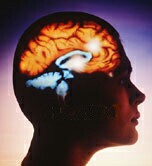Lesser pineal shift, reduction or no increase in pineal shift on follow-up CT up odds of awakening
THURSDAY, Feb. 5, 2015 (HealthDay News) — For patients with acute coma, reversal and/or limitation of lateral brain displacement is associated with awakening, according to a study published online Jan. 27 in the Annals of Neurology.
Robert G. Kowalski, M.B.B.Ch., from the Johns Hopkins Hospital in Baltimore, and colleagues examined the correlation between lateral brain displacement and awakening from acute coma in a prospective observational study. The authors analyzed head computed tomography (CT) scans at coma onset, after awakening, and at follow-up in 85 patients with new-onset coma (mean age, 58 years).
The researchers found that, at coma onset, 51 percent of patients had midline shift on head CT and 51 percent of patients awakened. Younger age (odds ratio [OR], 1.039; P = 0.040), higher Glasgow Coma Scale score at coma onset (OR, 1.455; P = 0.001), non-traumatic coma etiology (OR, 4.464; P = 0.048), lesser pineal shift on follow-up CT (OR, 1.316; P = 0.009), and reduction or no increase in pineal shift on follow-up CT (OR, 11.628; P = 0.004) were independent predictors of awakening, in multivariate analysis.
“These findings suggest objective parameters to guide prognosis and treatment in patients with acute onset of coma,” the authors write.
Copyright © 2015 HealthDay. All rights reserved.








